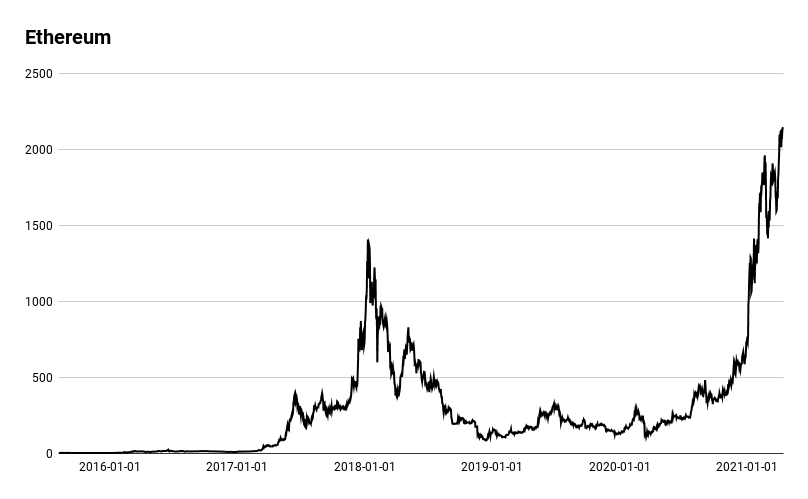Misconceptions about cryptocurrencies


Criticism of cryptocurrencies is sometimes based on misconceptions about the purpose of the currencies. Common arguments used are usually that, for example, Bitcoin only serves a purpose for those who engage in drug trafficking, trafficking or terrorism. Another common argument is that cryptocurrencies would be a single large pyramid scheme.
Criticism of cryptocurrencies is sometimes based on misconceptions about the purpose of currencies. Common arguments used are usually that, for example, Bitcoin only serves a purpose for those who engage in drug trafficking, trafficking or terrorism. Another common argument is that cryptocurrencies would be a single large pyramid scheme.
In reality, more and more established institutions are turning to Bitcoin as an alternative to the US dollar, and it is becoming increasingly clear that many are looking for an alternative to cash. And now both Bitcoin and Ethereum have just reached new top levels - but what do the prospects may look like from here?
Tesla recently invested $ 1.5 billion in Bitcoin, but was just one of several companies to make similar decisions. A couple of weeks later, interested buyers were also informed that you can now also buy your car by paying with Bitcoin. In the same way, companies such as PayPal have taken a clear step towards what they seem to believe is part of the means of payment of the future, when they enable their users and customers to pay with cryptocurrencies.
In twelve months, the price of Bitcoin has risen from just over $ 7,100 to today's levels of over $ 62,000. During the same period, Ethereum has risen from around USD 170 to over USD 2200.

Note: Past performance is not a reliable indicator of future results.

Note: Past performance is not a reliable indicator of future results.
However, as is well known, this is not the first time we have seen this type of development in a relatively short time for cryptocurrencies. Between 2016 and 2017, the price of crypto multiplied and then fell back again. Many investors also made significant losses with crypto investments between early 2018 and late 2020.
Every time cryptocurrencies get more attention in the media, it is met with the same type of criticism. It is mainly about energy discussions for cryptocurrency mining and transactions, that the only area of use would be terrorism or drug trafficking and that it is only a bubble. At the end of each cycle, critics consider themselves to have been right and more than happy to refer to the tulip bubble in the 17th century, despite the fact that the value at the new bottom is many times higher than where the price began its journey.
However, the outlook for digital currencies may differ from that of tulip bulbs. With more and more established companies joining, they are joining the ranks to either offer their customers to buy their products with, for example, Bitcoin and payment solutions (Visa and Mastercard have recently communicated that they are working to offer their users to pay with cryptocurrencies) which is also accelerating the step from fiat money alone to a future that clearly includes digital currencies.
That the price is volatile is a separate discussion. Wide-spread view is that we are early in the crypto life cycle, which means that we should still be in a growth phase rather than an established stage. We will see continued fluctuations, and with these, the voices of critics will be heard louder every time the price falls (sharply) again. However, this does not mean that the trend must be fundamentally broken, but that it may be possible to invest long-term at lower price levels if you believe in this new asset class and can accept the risks.
This information is in the sole responsibility of the guest author and does not necessarily represent the opinion of Bank Vontobel Europe AG or any other company of the Vontobel Group. The further development of the index or a company as well as its share price depends on a large number of company-, group- and sector-specific as well as economic factors. When forming his investment decision, each investor must take into account the risk of price losses. Please note that investing in these products will not generate ongoing income.
The products are not capital protected, in the worst case a total loss of the invested capital is possible. In the event of insolvency of the issuer and the guarantor, the investor bears the risk of a total loss of his investment. In any case, investors should note that past performance and / or analysts' opinions are no adequate indicator of future performance. The performance of the underlyings depends on a variety of economic, entrepreneurial and political factors that should be taken into account in the formation of a market expectation.